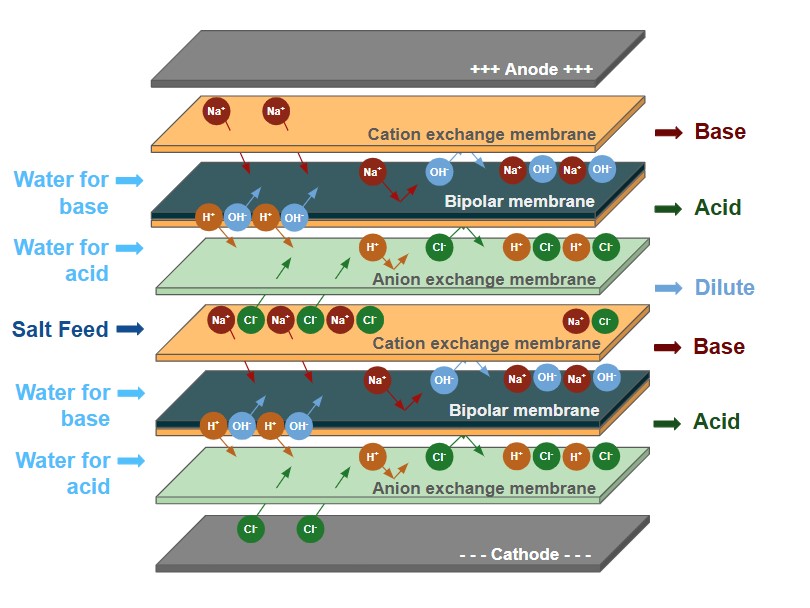Bipolar Electrodialysis introduces a BP membrane in the stack that splits water in H+ and OH- when the voltage is applied.
As with standard electrodialysis (Figure 1) , the voltage also moves the ions from the salt feed stream through the cation exchange and anion exchange membranes. Contrary to standard ED though, the cations and anions are not entering the same water stream, but in separate stream on each side of the BP membrane, thus combining with the H+ and OH- to form their conjugated acid and base. This is called 3-compartment BPED, or 3C-BPED.
In a 2-compartment BPED (2C-BPED) configuration, one of the monopolar membrane is left out of the equation, meaning the applied voltage will only move either anions or cations away from the salt feed solution, replacing them by OH- or H+ ions respectively:



